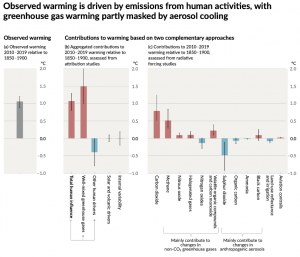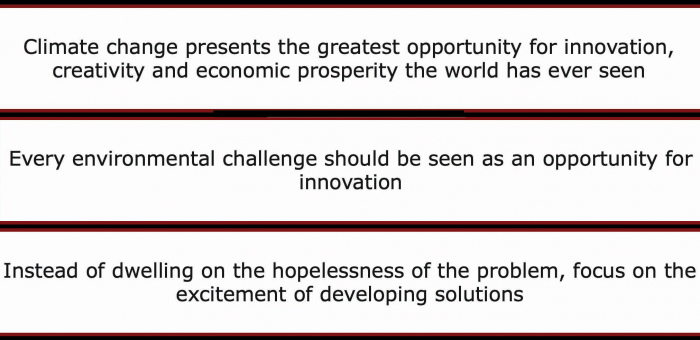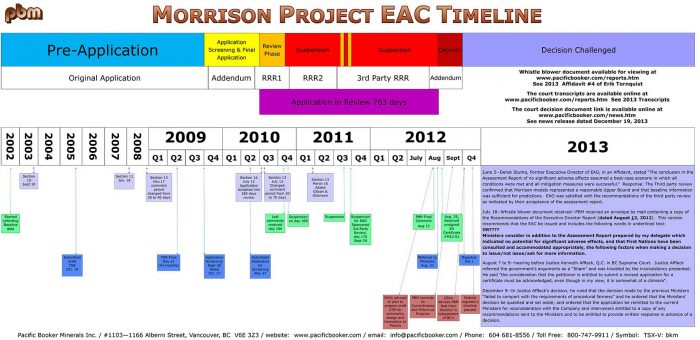Environment
Sustainable Aviation Fuel — Opportunities for Innovation in Aviation Sector
With the summer holiday season coming to an end, and after hearing no end of COVID-related horror stories (delays, cancelled flights, staff shortages, passport issues) from friends and family who decided to travel by air to destinations afar for the first time in several years, I thought I would spend some time exploring climate solutions in the aviation sector.
the summer holiday season coming to an end, and after hearing no end of COVID-related horror stories (delays, cancelled flights, staff shortages, passport issues) from friends and family who decided to travel by air to destinations afar for the first time in several years, I thought I would spend some time exploring climate solutions in the aviation sector.
As I noted in my recent presentation to the BC Aviation Council May Conference 2022, Transportation in the aviation sector affects our climate through two main ways. The first, and most obvious, is via the emissions of greenhouse gases associated with the combustion of jet fuel. In 2020, international (not including domestic) aviation was the 10th biggest total emitter of carbon (171.15 Megatonnes) world wide (behind China, USA, India, Russia, Japan, International Shipping, Germany, Iran and South Korea). In total, aviation accounts for about 2.5% of global emissions of carbon dioxide.
 The second main way that aviation affects the climate system is through the creation of contrails. Contrails occur when moisture in jet exhaust condenses in the high altitude cold ambient environment to create lines of thin cirrus clouds, comprising ice crystals, whose net effect is to warm the Earth further. While innovation in flight path planning is ongoing in an effort to reduce contrail formation, off the shelf solutions to replace jet fuel appeared elusive, until recently.
The second main way that aviation affects the climate system is through the creation of contrails. Contrails occur when moisture in jet exhaust condenses in the high altitude cold ambient environment to create lines of thin cirrus clouds, comprising ice crystals, whose net effect is to warm the Earth further. While innovation in flight path planning is ongoing in an effort to reduce contrail formation, off the shelf solutions to replace jet fuel appeared elusive, until recently.
On August 6 and 7, 2022 I attended the Abbotsford Air Show to learn about innovation in the aviation industry and the use of sustainable aviation fuel (SAF), sometimes known as biojet fuel. I was quite excited by what I discovered as it appears that Canada is uniquely positioned to be an international leader in this area.
It was evident to me that the aviation industry is deeply concerned about their greenhouse gas emissions and that they are investing heavily in carbon-neutral technology pathways. While we can expect to see the increasing use of electric engines, hydrogen fuel cell technology and even potentially hydrogen combustion from onboard cryogenic storage tanks, these will likely only be available for commuter, regional and short haul flights (<120 minute with < 150 passengers) over the next decade or two. Unfortunately, such short-haul flights only account for about 27% of global carbon dioxide emissions from the aviation sector whereas medium and long haul flights account for the remaining 73%. And so, if we want to reduce emissions from the aviation sector over the next few decades, widespread adoption of SAF made from renewable organic waste will be required.
A number of companies, including Neste, Lanzajet and World Energy have either been recently established or are already heavily invested in producing SAF using renewable ethanol from waste (such as cooking oil) as an initial focus. Of course, establishing sustainable supply chains for organic waste that don’t involve food stocks (e.g. Canola) or limited supplies of cooking oil will be needed if SAF is to scale up globally. Other companies (e.g., Licella, Ensyn, Steeper Energy etc.) are also heavily invested in exploring the potential of non-food source related waste (e.g. from forestry, municipal waste, sewage, waste plastic etc.) as feed stock for renewable fuels.
 And herein comes the potential opportunity for British Columbia and Canada.
And herein comes the potential opportunity for British Columbia and Canada.
First, the University of British Columbia’s Department of Wood Science is already considered an international leader in biofuel research and hosts the British Columbia Sustainable Marine, Aviation, Rail and Trucking (BC-SMART) consortium. British Columbia and Canada are well positioned to capitalize on investments in research and innovation in this sector.
Second, British Columbia has no shortage of wood or other organic waste that could potentially sustain domestic supply chains for biofuel production.
Third, wood waste, such as slash piles left behind after logging activities have concluded, are often either burnt in situ, left to decompose, or eventually act as a fuel source for wild fires. Removing this waste and converting it to biofuel has significant environmental co-benefits.
Fourth, wood waste is distributed throughout British Columbia, and in particular rural BC. Capitalizing on the opportunities afforded by the harvesting of wood (or other organic) waste would provide distributed economic opportunities for indigenous and non-indigenous communities across our province.
In 2018 I wrote extensively about the challenges and opportunities associated with greenhouse gas reductions in British Columbia. In particular, I noted that embedded in the confidence and supply agreement that I signed with the BC NDP in 2017 was the following commitments:
Climate Action
-
- Implement an increase of the carbon tax by $5 per tonne per year, beginning April 1, 2018 and expand the tax to fugitive emissions and to slash-pile burning;
- Deliver rebate cheques to ensure a majority of British Columbians are better off financially than under the current carbon tax formula;
- Implement a climate action strategy to meet our targets.
While British Columbia is on track to dramatically reduce its greenhouse gas emissions in the years ahead associated with our Clean BC climate plan, one of the policy commitments we didn’t deliver on was an expansion of the carbon pricing to slash pile burning. This is important since if a price is attached to slash emissions, an incentive is created to avoid this potential liability and so forestry (and other) companies would be given an economic reason to extract slash from forest operations. Such a price could be set directly (on emissions) or indirectly (via regulation) as was done for fugitive emissions in the oil and gas sector.
So in summary, it strikes me that the sustainable fuel sector for long haul transportation represents an incredible opportunity for innovation that British Columbia and Canada can capitalize on. The economic, environmental and social benefits of investments in this area appear to be far-reaching.
Coming back to the Abbotsford Air Show, one of the planes that I toured was the Boeing P-8A (pictured above). The P-8A is a military plane designed for long-range reconnaissance, surveillance, and submarine detection missions. And here is why this is important.
 Canada is in the final stages of a procurement process:
Canada is in the final stages of a procurement process:
“To equip the Canadian Armed Forces with a long-range manned Command, Control, Communications and Computers (C4) and Intelligence, Surveillance and Reconnaissance (ISR) and Anti-Submarine Warfare (ASW) aircraft with extended capabilities to replace the CP-140 Aurora.”
The Boeing P-8A represents a solution that may meet the needs of this procurement. Why this is interesting is that the P-8A is already capable of operating on 50% SAF and Boeing has committed to meet a 100% SAF capability by 2030.
Touring the P-8A felt like I was exploring a repurposed Boeing 737 for good reason! The P-8A has a Boeing 737-800 body, 737-900 wings, a 737 cockpit and a 737 engine with a substantive increase in available electrical power. Fully 86% of the commercial components within the P-8A are common with Boeing’s 737 series, the world’s most prevalent passenger jetliner.
Figure: Four images taken inside the Boeing P-8A illustrating its galley and washroom similarities with the Boeing 737 passenger jetliner.
While I do not have the expertise to assess the military capabilities of the P-8A, I learned that 156 of them with over 450,000 logged flight hours, are in military use worldwide (in the US, India, UK, Norway, Germany, Australia, New Zealand and South Korea).
Figure: Four images taken inside the Boeing P-8A showing its military workstations and the sonobuoy storage/release systems
Figure: Two images of the underside of the Boeing P-8A wing indicating wing pylons that allow for the attachment of up to 3,000 lb weapons.
What excited me most about my tour of the Boeing P-8A at the Abbotsford Airshow is that I came away with a sense of optimism and hope for the future of the aviation industry. Imagine the potential for the Canadian military to show international leadership by investing in a sustainable replacement for its CP-140 Aurora fleet that would create a local market for sustainable air fuels produced from locally-sourced slash and other organic waste. While scaling up the use of SAF in the global aviation industry remains a challenge, Canada can do its part positioning itself as a early adopter and international leader in the area.
Moving on from Provincial Politics: A Climate for Hope
To bring closure to my 7 1/2 years as an MLA for Oak Bay-Gordon Head and 5 years as leader of the BC Green Party I felt it was important to add this video to my archived MLA website. Moving forward, I plan to continue my work on climate solutions on the local, provincial, national and international level.
This YouTube video was produced by Robert Alstead, the same person who created the documentary “Running on Climate”. That documentary provided an inside look into the 2013 election campaign set within a greater climate change narrative.
This YouTube video might be of interest to some as it gives insight as to why I got into and out of politics. The book that I refer to in this video has the working title: “A Climate for Hope” and not “A Vehicle for Change”.
Socially & Environmentally Responsible Corporations & Investing: The Opportunity
There is a coming paradigm shift around the purpose of investment and businesses. The last decade has seen growing pressure on corporations to consider the environmental, social, and governance consequences of their investment and management decisions. This more holistic view of the corporation is a necessary and positive development. Corporations do not exist in a vacuum; the societies in which they conduct business are indispensable sources of their success and vitality. Accordingly, corporations have duties to both their shareholders and the societies in which they are embedded. By incorporating these other considerations into their decision-making corporations will not only provide many societal benefits but will enhance profits at the same time.
Increasing numbers of Canadians are coming to believe that companies should stand for something more than profit. Over half of Canadians now lean towards purchasing products from businesses that align with their worldview. Some of this change is likely being driven by the values and interests of millennials and gen-z who make up a growing share of the population. A recent survey by Deloitte provides interesting and important insights into the priorities of these two generations. When asked to identify the three issues they believed to be most important, health care and disease prevention, climate change, unemployment, and income inequality all ranked higher than economic growth.
There are signs that the private sector may be shifting towards more holistic governance models. Many companies are attempting to align their brands with shifting consumer preferences and nascent corporations embrace socially and environmentally conscious business models. In Europe, over two-thirds of the start-ups at the Slush 2019 conference were classified as purpose driven companies, defined as corporations that include one or more of the United Nations Sustainable Development Goals as an integral component of their operations, an increase of about 7% from 2014.
However, actions taken by the state can help to accelerate the shift towards corporations with a defined social purpose. By creating the right regulatory and policy frameworks, government can incentivize socially responsible investment. One step in this direction is the BC Government’s recently announced regulations around benefit companies. Canadian corporate law does not have a formal doctrine recognizing shareholder primacy. However, the new legislation and corresponding regulations will empower corporations to continue addressing pressing social and environmental issues as they scale their operations and make it easier for investors to choose companies that align with their values.
In the future, another avenue that the province could consider promoting to encourage investment with the potential to generate positive social returns are community investment co-ops (CICs). CICs are capital pools that provide residents of a specific region or locality with the opportunity to invest some of their money in local businesses. Individual investors typically elect the fund managers themselves to ensure that the investments made through the vehicle are consistent with their priorities and values. Through CICs, residents can become directly involved in economic development projects within their communities.
Ample capital already exists within the province which could be harnessed by CICs. Each year, millions of dollars exit British Columbia to be invested in other jurisdictions. If the province established a structure designed to incentivize investments into CICs, some of this capital could be redirected into local businesses. At a time in which rural regions in BC are experiencing economic stagnation, CICs could be used to reinvest money generated through regional economic activity into local corporations and start-ups, helping to stimulate rural economies.
Several CICs already exist within BC including the Vancouver Island CIC, the East Kootenay CIC, and the West Kootenay Boundary Investment Co-Op. Some have already received financial support from the government. However, there are a number of legislative and regulatory changes open to the government which could be used to make these investment vehicles more attractive to British Columbians. Some options include creating a tax credit for investors and amending the securities act to make it easier for CICs to generate larger capital pools for investment.
The adoption of a legislative and regulatory framework designed to popularize CICs would not be without precedent. Other jurisdictions have successfully introduced programs centered around social finance, including other Canadian provinces. In 1993, Nova Scotia introduced the Equity Tax Credit which allows residents to claim a tax credit on investments made into provincially based businesses. Six years later, the province created the Community Economic Development Investment Funds (CEDIF) program in an attempt to encourage wider adoption of the tax credit. The program offers a streamlined application process for those seeking to establish a CEDIF and allows investors to claim an income tax credit on their investments in the vehicle. By 2013, Nova Scotians had established 47 CEDIFs which had contributed over $56 million in financing to local businesses, some of which were mission-oriented corporations dedicated to social and environmental causes.
When provided with the opportunity to pursue business models that have the potential to generate positive social and environmental outcomes, many individual investors and nascent corporations will choose to do so. As society begins to redefine its expectations of corporations, the province has the chance to become a world leader in the movement towards socially responsible business. The recently introduced legislation and regulations around benefit corporations represent a positive step in this direction but the province should not stop there.
Effective today, BC businesses can now incorporate as Benefit Companies
In May 2019, my private Member’s bill: Bill M209: Business Corporations Amendment Act, 2019 received royal assent but required an Order in Council to become enacted. That happened today. I’m delighted to report that effective immediately, the province is now officially the first jurisdiction in Canada to allow companies to incorporate as benefit companies.
As you will see from the government press release (that I reproduce below) I was pleased to sponsor this bill and to collaborate with government to see it become the first ever opposition private members’ bill passed into law in B.C. Our province is home to incredibly innovative companies that want to play a larger role in addressing the challenges and opportunities we face. This legislation helps position our province to be a leader on the cutting edge of global economic trends. By becoming the first jurisdiction in Canada to create benefit companies, B.C. can position our economy for success as we work to recover from the impacts of COVID-19 and beyond.
My bill amended the Business Corporations Act to create a new Part 2.3 that enabled companies to become benefit companies. These companies will have to meet certain requirements, including:
- Committing in their articles to operate in a socially responsible and environmentally sustainable manner, and to promote specific public benefits;
- The directors must act honestly and in good faith to pursue public benefits and consider the interests of persons affected by the company’s conduct
- Reporting publicly against an independent third party standard.
The choice to become a benefit corporation status is completely voluntary and has no impact on other existing corporations, other corporate forms, taxes or government regulation
It’s generally recognized that Canadian corporate law does not have a strict “shareholder primacy” rule as the US does, so directors of companies in Canada have more discretion to pursue a broader mandate beyond maximizing shareholder profits. However, this legislation was needed to
- Provide clarity for directors and shareholders about the nature and mandate of the company – avoid the risk of a shareholder challenge regarding the director’s duties;
- Provide certainty for impact investors of the nature and mandate of the company;
- Enable companies to attract capital while being true to their mission as they grow;
- Protect the vision of the founders of benefit companies from shareholder challenges;
- Provide a simple framework for companies to adhere to that is legally and commercially recognized.
This legislation also encourages more companies to pursue a socially responsible and environmentally sustainable approach to business, creating beneficial outcomes for society as a whole and leveraging the power of business to help us to tackle significant social and environmental challenges.
Below I reproduce government’s press release issued today. I am grateful to the Minister of Finance, the Legislative drafters, and Sarah Miller, a researcher in the BC Green Caucus, that I worked closely with in developing this legislation.
Government Press Release
New business option empowers companies to give back
For Immediate Release
2020FIN0038-001197
June 30, 2020
Ministry of Finance
VICTORIA – Through historic and collaborative legislation, British Columbia is the first province in Canada to create the option of benefit companies, a new way to do business that benefits people, communities and future generations.
“As government, we’re proud to support B.C. businesses that not only want to do well for their stakeholders, but also give back to their communities in important ways,” said Carole James, Minister of Finance. “By providing the framework through legislation, benefit companies will help propel B.C.’s economy into the future, grounded by the values and beliefs that define us as British Columbians. This is especially important now, as we work to build back better from the impacts COVID-19. I want to thank independent MLA for Oak-Bay Gordon Head Andrew Weaver and my colleagues in the third party for being champions of this new business structure from day one.”
Changes to the Business Corporations Act give British Columbians a new option when choosing a corporate structure for their business. A benefit company is a for-profit corporation committed to conducting its business in a responsible and sustainable manner, as well as promoting public benefits in addition to serving the interests of its shareholders. For example, the benefits could be artistic, charitable, cultural, economic, educational, environmental, literary, medical, religious, scientific and/or technological.
“I was pleased to sponsor this bill and to collaborate with government to see it become the first ever opposition private members’ bill passed into law in B.C.,” Weaver said. “Our province is home to incredibly innovative companies that want to play a larger role in addressing the challenges and opportunities we face. This legislation helps position our province to be a leader on the cutting edge of global economic trends. By becoming the first jurisdiction in Canada to create benefit companies, B.C. can position our economy for success as we work to recover from the impacts of COVID-19 and beyond.”
A business that becomes a benefit company must:
- specify its public benefit goals in its articles of incorporation, allowing investors to determine if the stated public benefit aligns with their investment and social goals;
- complete and publish an annual benefit report assessing the company’s performance in its promotion of its stated public benefits;
- compare its progress against an independent, third-party standard;
- share the report publicly by making it available at the company’s records office and on the company’s website, if it has one; and
- require the company’s directors to balance the commitments in the benefit provision with their duty to act in the best interests of the company.
“Our work to expand and modernize BC Registries has played a key role in bringing this exciting legislation to life,” said Anne Kang, Minister of Citizens’ Services. “Allowing businesses to register as benefit companies gives them more tools to help improve our communities and the well-being of people. This initiative is another step forward in our work to deliver modern, reliable and easy-to-access services for British Columbians, where and when they need them.”
These amendments ensure that B.C. companies committed to considering the impact of their decisions are able to balance the needs of their shareholders with the values of British Columbians.
The values of collaboration, partnership and public good are foundational to the Confidence and Supply Agreement with the BC Green Party caucus, and it continues to provide the basis for a strong, stable government for British Columbia. By working together, progress continues to be made on shared priorities, like climate change, tackling the housing crisis and building a sustainable economy that works for everyone.
Quick Facts:
- Benefit companies were first introduced in 2010 in the United States and are now possible in 35 U.S. states, as well as Italy and Colombia.
- On May 16, 2019, the Business Corporations Amendment Act (No. 2) received royal assent.
- This is the first private member’s bill from an opposition party to be passed directly into law in B.C.
Learn More:
To learn more about the amendments, visit: www.bclaws.ca/civix/document/id/bills/billsprevious/4th41st:m209-1/search/CIVIX_DOCUMENT_ROOT_STEM:(Business%20Corporation)%20AND%20(benefit)?1#hit1
Ongoing regulatory inconsistencies facing Pacific Booker’s Morrison mine project
Yesterday I published a blog post detailing the apparent regulatory inconsistencies facing the advancement of Pacific Booker’s Morrison Mine project. Today during question period I rose to explore this issue further with the Minister of Environment. Today’s question built upon an initial question I asked the Minister of Energy Mines and Petroleum Resources on March 5, 2020.
Below I reproduce the text and video of our exchange.
Video of Exchange
Question
A. Weaver: On March 5, I asked the Minister of Energy, Mines and Petroleum Resources a question concerning regulatory inconsistencies in the provincial government’s handling of Pacific Booker’s proposed Morrison mine. I’d like to explore this a little further.
In 2015, after reviewing the project for a second time, the Ministry of Environment issued a section 17 order that the project undergo further assessment. Despite numerous exchanges with the environmental assessment office and the completion of an in-depth study of Morrison Lake, Pacific Booker has been unable to clarify the precise nature of what is actually required in the section 17 order. For Pacific Booker, this order has been tantamount to a rejection of its project without the ministry formally saying no.
Government recently amended the environmental assessment process to provide certainty of process and clarity of regulatory considerations. When presented with an application for an environmental assessment certificate, the minister is given three options under the 2018 Environmental Assessment Act:
(1) grant the certificate,
(2) grant the certificate with conditions attached or
(3) reject the project.
Pacific Booker’s treatment doesn’t align with the new assessment standards. They’ve been given the opposite of regulatory certainty, and their project has been shunted off for a further assessment. My question is to the Minister of Environment. Considering the recent changes to the environmental assessment process, will he amend the 2015 order to clarify the nature of the work required by Pacific Booker Minerals?
Answer
Hon. G. Heyman: Thank you to the member for the question. I recall the question to my colleague, the Minister of Energy, Mines and Petroleum Resources, in March quite well. As the Minister of Energy and Mines said at the time, he and I can’t speak to the specifics of why the old government made the decision that it made with respect to the proposed Morrison mine.
The member is also correct. We made significant changes to the Environmental Assessment Act through revitalization, and we’re proud of that as our government. We brought new transparency to the act. We’ve included engagement of Indigenous peoples and local communities at the front end, and we have taken steps to ensure that good projects that respect the environment, that respect Indigenous peoples and that respect the public can be approved more quickly with greater certainty.
However, with regard to Pacific Booker, the member is correct. Under the old act, the decision was made to require additional information from the proponent before a final decision on the proposal was made.Under the new legislation or the transition regulation, there is no ability to take a project like Morrison that has proceeded this far down the process and transfer it to the provisions of the new act. But it’s my understanding that the company is currently working through the required regulatory process for further assessment in tandem with the environmental assessment office.
Supplementary Question
A. Weaver: Thank you, Minister, for your answer. I think the minister may have missed the point. Pacific Booker doesn’t know what the section 17 order does because what they’re supposed to do has not been conveyed to them with any certainty. So they are left with an uncertain order, of which they don’t know how to respond. So it’s not possible for them to move through the regulatory process when that process has not been defined in which they could go.
They have conducted detailed assessments of Morrison Lake and its internal wildlife, including measuring water quality and lake mixing patterns as well as investigations into fish habitat and spawning patterns. They have pledged to use cutting-edge technology to reduce groundwater seepage from the tailings storage facility. They’ve even completed a request, and they were the only one asked to do so, to comment on the implications of Mount Polley for their tailings management.
Throughout the protracted environmental assessment process, Pacific Booker has stated its preference to use local suppliers and to hire local workers. The project would generate over 1,000 jobs in the region near Smithers, and it would provide millions of dollars in tax revenue. At a time when the provincial economy is reeling due to the efforts of COVID-19, the project would give that region a much-needed economic boost.
My question, again, to the Minister of Environment is this. Given the extensive work undertaken by Pacific Booker Minerals to examine and reduce the environmental impact of the potential Morrison mine project and the potential economic benefit to the province, will this government commit to ensuring that the company receives a timely, unbiased review of the latest proposal, and in particular, is given clear instructions from your office so that it knows what boxes need to be ticked so that they can follow due process, rather than second-guessing certain people who haven’t made that very clear?
Answer
Hon. G. Heyman: Thank you again to the member for the supplemental question.
The company, of course, has to provide some very specific additional information that was required under the order. The order was specific. Some examples of the type of additional information required are sockeye salmon use of Morrison Lake, upper and lower Tahlo Creek and the Morrison River, hydrogeological and groundwater data for areas between the mine and Morrison Lake and further engagement with the Lake Babine Nation and other impacted First Nations.
I’m advised that the company made its latest submission to the environmental assessment office in December and that environmental assessment office staff met with the company this past February as additional information was required from the company. It is certainly not the intention of our government to make proponents guess at what is required. I checked with the environmental assessment office, and my understanding is that staff there are working to help answer any questions that the proponent has with respect to the information required.
I’m advised that the company plans to provide an update to the environmental assessment office regarding their next steps, and the environmental assessment office will be very happy to assist them in a timely answering of the questions required by the order. As minister, I assure that when the application is complete and ready for reconsideration, it will be considered in a timely manner.

















